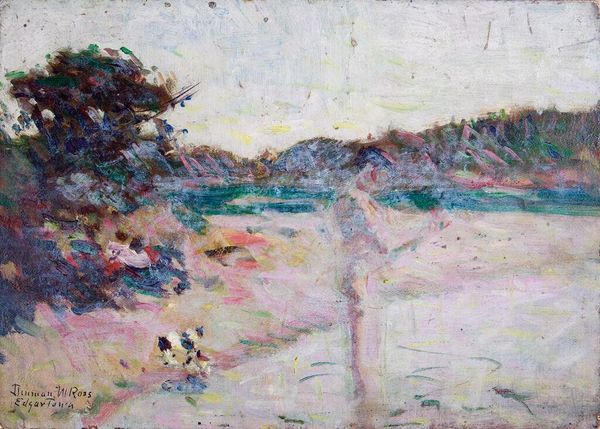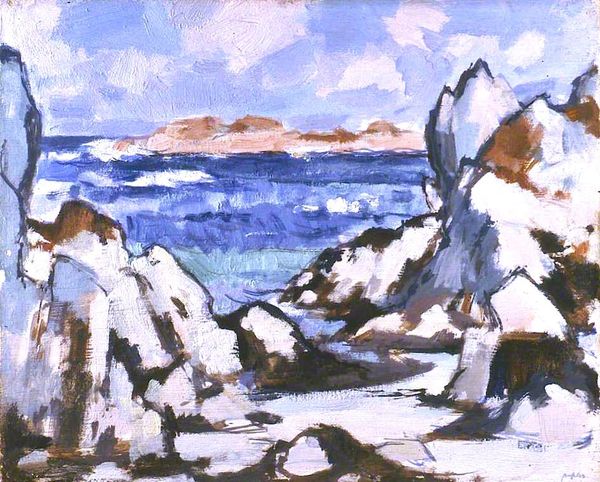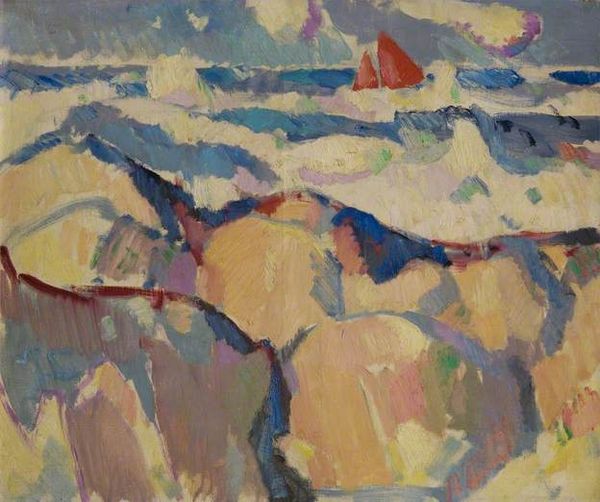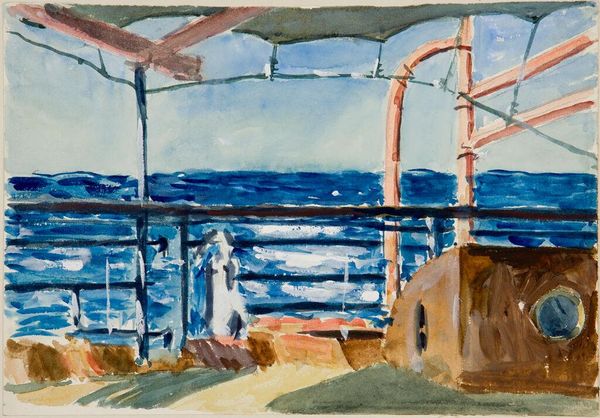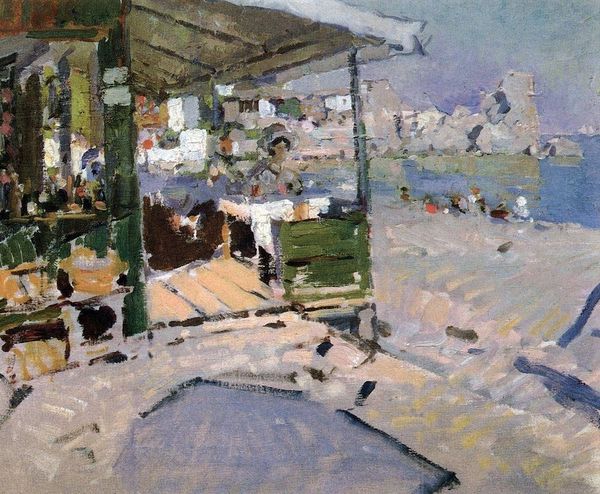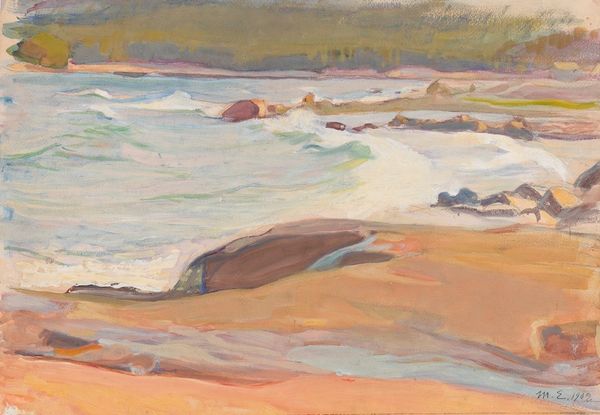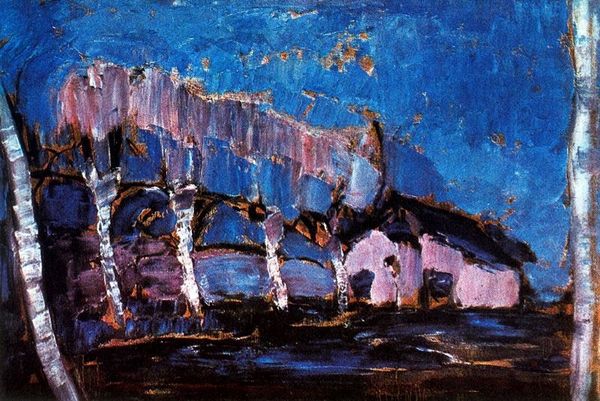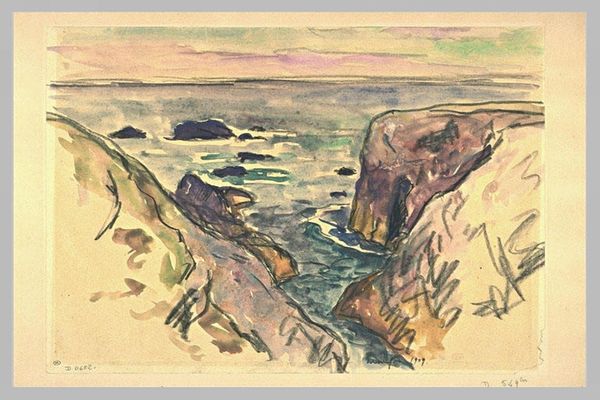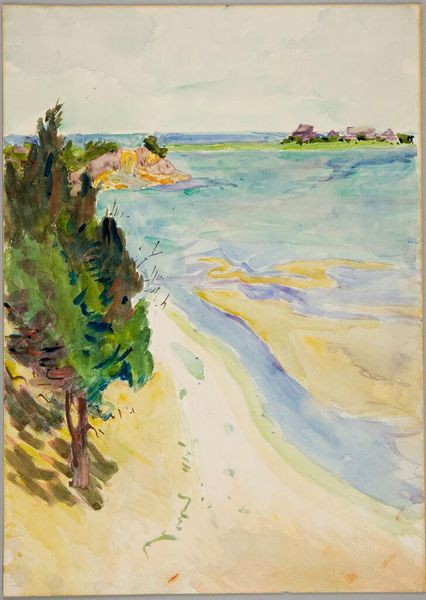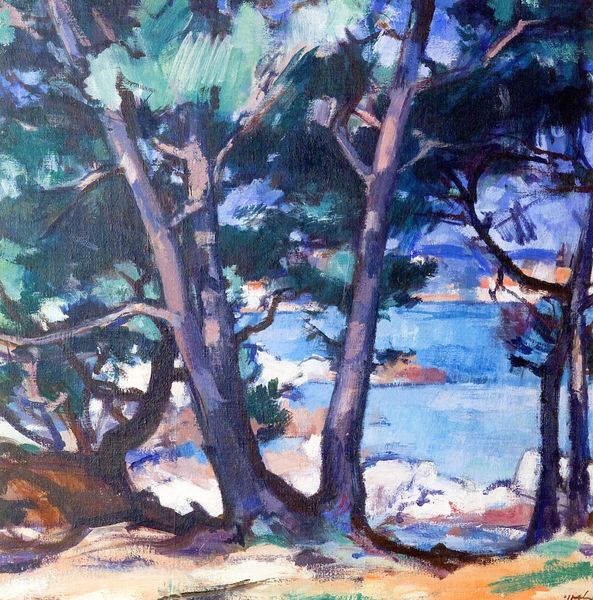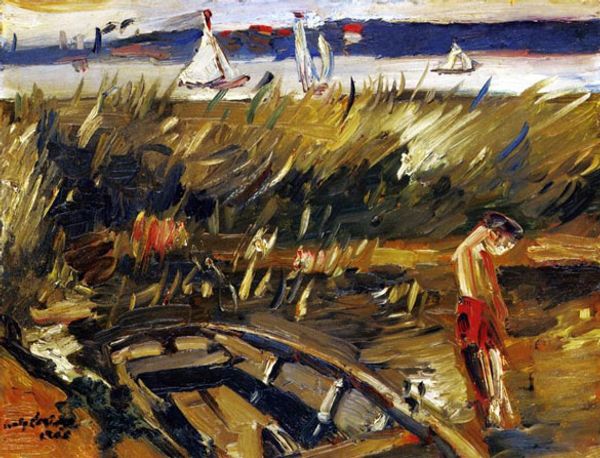
painting, plein-air, oil-paint
#
painting
#
impressionism
#
plein-air
#
oil-paint
#
landscape
#
impressionist landscape
#
oil painting
Copyright: Raoul Dufy,Fair Use
Curator: Immediately, I’m drawn to the tangible textures, almost a thick impasto, creating an immediate visual density on the canvas. Editor: That's right. This oil painting by Raoul Dufy captures the essence of a day at the "Sandy beach of Sainte-Adresse". The piece immediately evokes a sense of leisurely summers and early beach culture. Curator: The application of paint draws my eye—the beach umbrellas rendered not with delicacy but robust strokes—they speak of mass production catering to middle-class leisure. Were these parasols commonly available objects then? Editor: Exactly! The rise of seaside tourism and the industry around it are crucial to understanding Dufy's portrayal. Think about how access to transportation, manufactured goods, and disposable income shaped these coastal communities. The painting freezes a specific socio-economic moment. Curator: The palette itself is revealing. The juxtaposition of muted yellows in the sand with a very bold use of deep blue hints that Dufy might be reflecting changing social values: industrious vacationing as leisure-capital. Editor: The beach would have functioned as a social stage where societal norms were performed, negotiated, or even subverted. Artworks depicting leisure reflect societal evolution. What appears carefree on the surface held deeper socio-political implications. Curator: I agree. His artistic production, choice of subject matter, materials—even the scale—are all reflections of emerging trends and access to consumer culture that reshaped social customs. Editor: The seemingly casual beach scene offers us valuable insights into the evolution of society. Curator: This impressionist scene tells of consumerism's role in constructing how we spend time off, and what it implies to be away from work, even nowadays. Editor: So the painting, from its surface to its underlayers, tells the story of that transformative period.
Comments
No comments
Be the first to comment and join the conversation on the ultimate creative platform.

